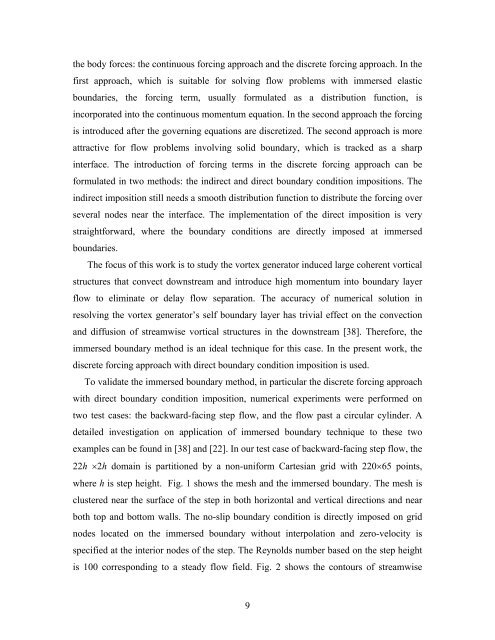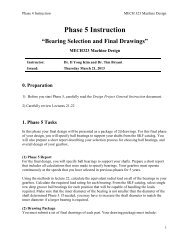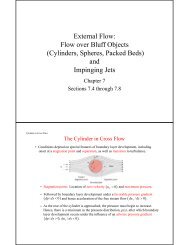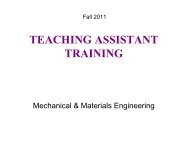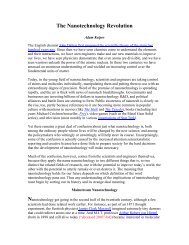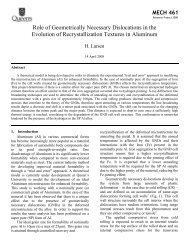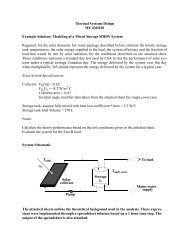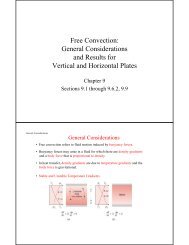Numerical Study of Passive and Active Flow Separation Control ...
Numerical Study of Passive and Active Flow Separation Control ...
Numerical Study of Passive and Active Flow Separation Control ...
Create successful ePaper yourself
Turn your PDF publications into a flip-book with our unique Google optimized e-Paper software.
the body forces: the continuous forcing approach <strong>and</strong> the discrete forcing approach. In the<br />
first approach, which is suitable for solving flow problems with immersed elastic<br />
boundaries, the forcing term, usually formulated as a distribution function, is<br />
incorporated into the continuous momentum equation. In the second approach the forcing<br />
is introduced after the governing equations are discretized. The second approach is more<br />
attractive for flow problems involving solid boundary, which is tracked as a sharp<br />
interface. The introduction <strong>of</strong> forcing terms in the discrete forcing approach can be<br />
formulated in two methods: the indirect <strong>and</strong> direct boundary condition impositions. The<br />
indirect imposition still needs a smooth distribution function to distribute the forcing over<br />
several nodes near the interface. The implementation <strong>of</strong> the direct imposition is very<br />
straightforward, where the boundary conditions are directly imposed at immersed<br />
boundaries.<br />
The focus <strong>of</strong> this work is to study the vortex generator induced large coherent vortical<br />
structures that convect downstream <strong>and</strong> introduce high momentum into boundary layer<br />
flow to eliminate or delay flow separation. The accuracy <strong>of</strong> numerical solution in<br />
resolving the vortex generator’s self boundary layer has trivial effect on the convection<br />
<strong>and</strong> diffusion <strong>of</strong> streamwise vortical structures in the downstream [38]. Therefore, the<br />
immersed boundary method is an ideal technique for this case. In the present work, the<br />
discrete forcing approach with direct boundary condition imposition is used.<br />
To validate the immersed boundary method, in particular the discrete forcing approach<br />
with direct boundary condition imposition, numerical experiments were performed on<br />
two test cases: the backward-facing step flow, <strong>and</strong> the flow past a circular cylinder. A<br />
detailed investigation on application <strong>of</strong> immersed boundary technique to these two<br />
examples can be found in [38] <strong>and</strong> [22]. In our test case <strong>of</strong> backward-facing step flow, the<br />
22h ×2h domain is partitioned by a non-uniform Cartesian grid with 220×65 points,<br />
where h is step height. Fig. 1 shows the mesh <strong>and</strong> the immersed boundary. The mesh is<br />
clustered near the surface <strong>of</strong> the step in both horizontal <strong>and</strong> vertical directions <strong>and</strong> near<br />
both top <strong>and</strong> bottom walls. The no-slip boundary condition is directly imposed on grid<br />
nodes located on the immersed boundary without interpolation <strong>and</strong> zero-velocity is<br />
specified at the interior nodes <strong>of</strong> the step. The Reynolds number based on the step height<br />
is 100 corresponding to a steady flow field. Fig. 2 shows the contours <strong>of</strong> streamwise<br />
9


